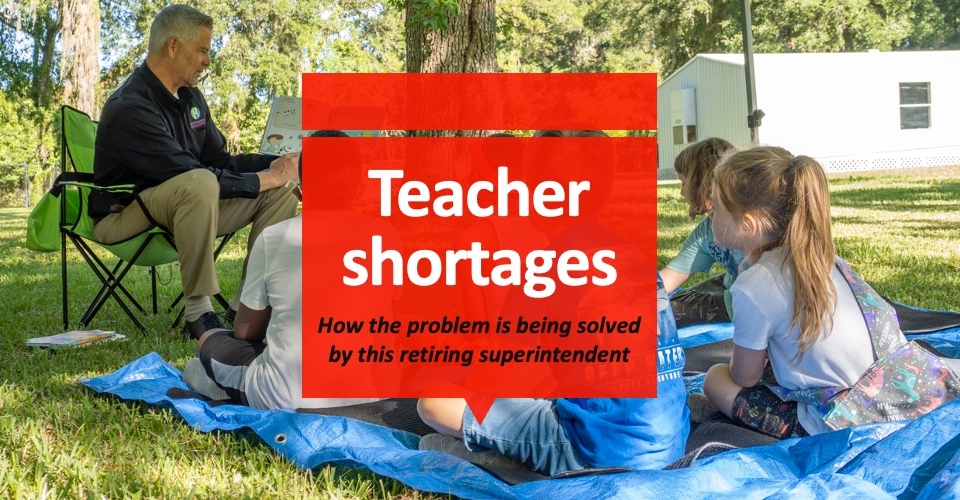I have been with Irvington Public Schools as a teacher and administrator for almost 20 years, so my career has been deeply intertwined with the district’s technological evolution. When I became superintendent in April 2020, I wanted technology to play a much stronger role in our classrooms and our equity efforts moving forward.
We are an urban school district with limited resources, which presents additional challenges, but we are committed to using every means at our disposal to provide equitable and accessible learning for all of our scholars.
The pandemic accelerated the need for wider adoption of tech tools, requiring us to put Chromebooks in the hands of every teacher immediately—and we’ve since ensured that every scholar has their own device, too. Providing access to those devices and the learning experiences they enable is only the first step, though.
Fast forward four years and it is incredible to see where we are and where we are going. Here are seven key strategies we employ to provide technology-rich educational experiences to our scholars.
1. Persist in providing technology equity and access
My first attempt at integrating a new technology came when I was a principal back in 2013. I launched a coding program and only one girl expressed any interest. It was disheartening because I wanted all of our scholars to understand that they had access to this technology.
Fast forward to last year, however, and we have made coding available to all of our elementary scholars with Ozobots, Lego Spike and Brick U. It may have taken a decade but we expanded access from one scholar to thousands.
2. Support and empower educators
When we implement new tech tools, we provide ongoing professional development to demonstrate how they can make teaching more convenient, efficient and engaging. We provide in-house PD where we can but we also tap outside help when we need to. For example, our technology solution partner, Bluum, provided professional development for our teachers when we deployed virtual reality headsets, as they have for tech initiatives since deploying Chromebooks in 2020.
Superintendent turnover: Frenzy of moves as school year ends
We have teachers who have been with the district for 30 or 40 years who have shared how much this PD has helped new technology feel less threatening to integrate into their classrooms. Just as exciting, we’ve seen a number of educators who have found their second wind through technology and have chosen to delay retirement and continue their careers as educators.
3. Prepare scholars for a tech-saturated world
Our scholars will graduate into a world that is rich in technology and we want them to be ready to engage in that world. Beyond providing 1:1 devices, we also have 3D printers and interactive whiteboards at all our schools, helping scholars become comfortable using technology as part of their daily lives.
4. Create and offer learning experiences that transcend time and place
Many of our scholars have not left our zipcode let alone the state of New Jersey. Our virtual reality headsets empower scholars to experience places across the globe they might not otherwise visit and to apply concepts and learning across the curriculum.
5. Collaborate with like-minded leaders
I belong to a number of superintendents’ groups. In one of them, we often share tech ideas so that no one is stuck reinventing the wheel when another of us has already perfected it.
For example, Irvington worked with two phenomenal partners from other districts as we planned and launched our STEAM Academy in the 2022-23 school year. They allowed us to visit, observe their models and leverage the work they had already done.
6. Choose partners with a human touch
Whatever company you buy your technology from, make sure they understand your entry points, desired outcomes, expectations of them and how they will address challenges that will arise. We chose Bluum as our strategic partner, and they’ve been instrumental in helping us plan and achieve our goals. This collaboration provided a comfortable, focused, and integrated technology experience.
7. Embrace continuous learning
Our technology director, John Amberg, does a great job staying on top of what is happening outside of our district, which allows us to stay on the cutting edge of teaching and learning with technology. Earlier this year, he organized our first artificial intelligence community summit to discuss issues related to this new technology. We will be launching an AI academy later this school year to provide support, guidance and training to our staff as the use of this technology continues to grow.
All of these efforts have paid off because our focus on technology is making a difference in our scholars’ lives. This past school year, one of our scholars achieved a perfect score on our statewide mathematics assessment. She attributed her success to having her own Chromebook so she could practice on i-Ready, an adaptive program that serves scholars practice math problems targeted at their existing skill level, whenever she had a chance.
My favorite lesson learned along the way is to not be afraid to take a risk and make a change for your district. Even if only one little girl shows up at the beginning, it’s a first step in leveraging technology to create equitable and accessible learning for every scholar in our district.









